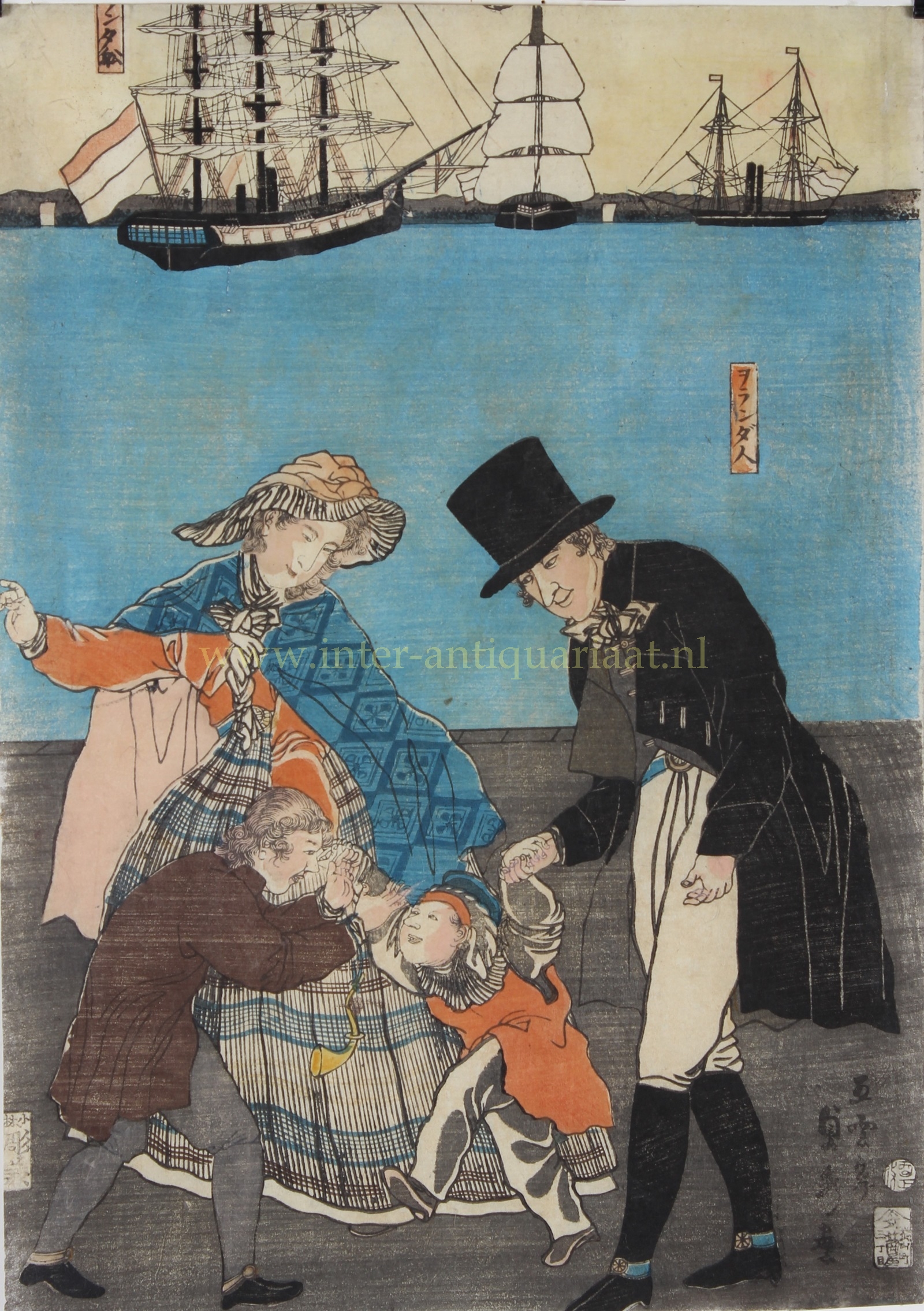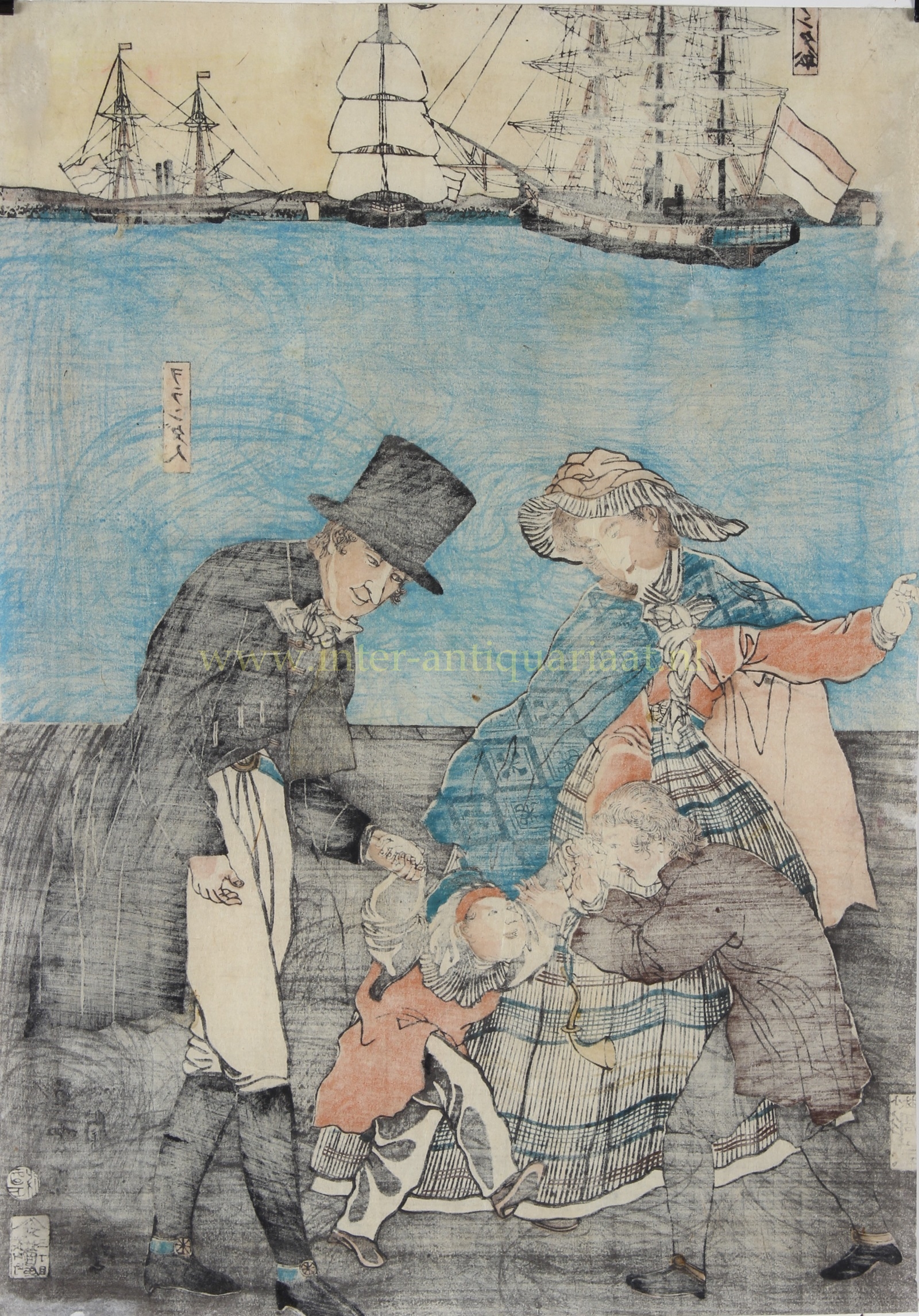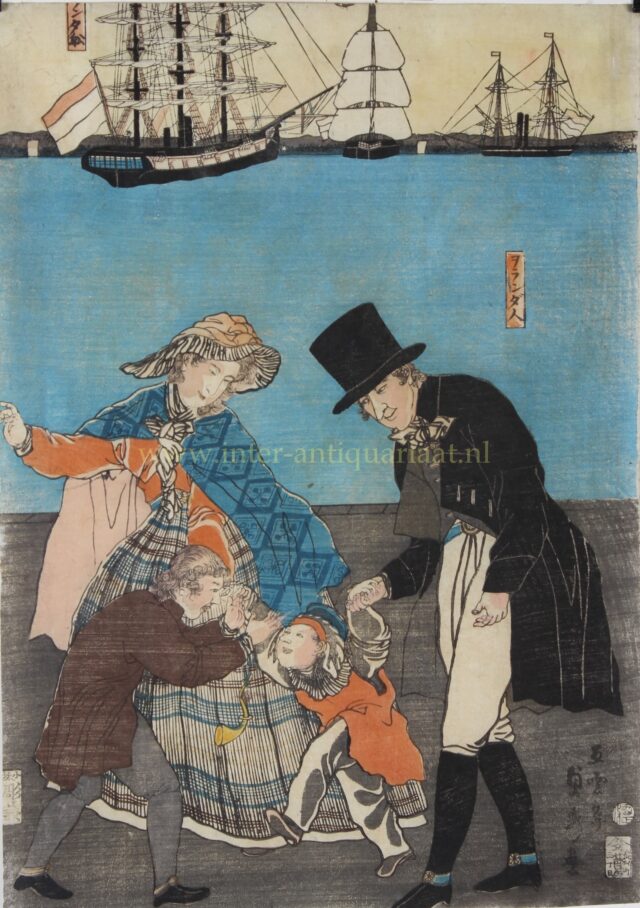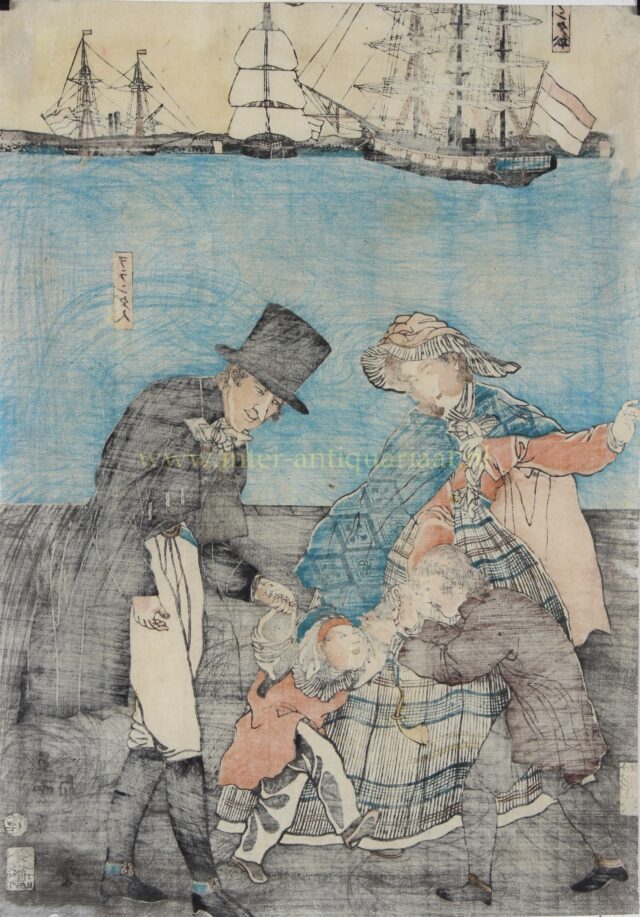The Dutch in Japan – Yokohama-e, 1861
“DUTCH PEOPLE TAKING A SUNDAY WALK IN YOKOHAMA” Woodcut made by Utagawa Sadahide and published by Tsujiokaya in 1861. Size:…
Read more€950
“DUTCH PEOPLE TAKING A SUNDAY WALK IN YOKOHAMA”
Woodcut made by Utagawa Sadahide and published by Tsujiokaya in 1861. Size: 37,2 x 25 cm.
From the 1630s to the mid-nineteenth century, Japan was virtually closed to foreigners. From 1641 onwards, the Dutch were the only Westerners allowed to reside and trade there. They had to adhere to strict regulations and were only allowed to live on Dejima, an artificial island in the port of Nagasaki.
In 1858, the Dutch monopoly ended, marking the end of the Dejima era. The United States, Great Britain, France and Russia also gained trading rights with Japan. The foreigners settled in Yokohama, which quickly developed into Japan’s most important port. They had much more freedom there than in Nagasaki, and women were also allowed to stay there. An international community developed in which the Dutch were no longer the most important.
The woodcut shown here is a so-called Yokohama-e (横浜絵, “Yokohama pictures”), printed from a woodblock depicting foreigners in the port city of Yokohama. Foreigners were a curiosity for the Japanese, and these prints met a huge demand. Prints made in Yokohama are more refined than earlier prints from Nagasaki. The artistic level is higher, the printing quality is better, and more colours were used.
Utagawa Sadahide (歌川 貞秀, 1807- c. 1878–1879) (also know as Gountei Sadahide), was member of the Utagawa school. His prints covered a wide variety of genres; amongst his best known are his pictures of foreigners in Yokohama in the 1860s, a period when he was a best-selling artist.
Price: Euro 950,-




